New South Wales (NSW) is a large state in south-eastern Australia. It is home to many famous attractions, including its capital city: Sydney.
- The history of the New South Wales
- New South Wales by numbers
- State flag and emblems
- New South Wales attractions
- New South Wales fast facts
- References
A printable PDF of the information on this page is available in the right-hand column.
The history of the New South Wales
Indigenous History
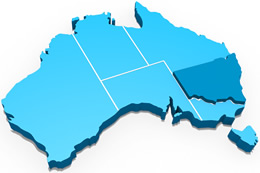
The original inhabitants of Sydney (the Cadigal people) spoke the Eora language. In Eora, Sydney is called Warran meaning ‘here’ or ‘this place’. Other dialects of the Sydney area include Dharug, Kurringgai and Dhawawal.
The Eora people were hunters and gatherers and inhabited coastal campsites where fish (such as snapper) and shellfish (oysters, mussels and cockles) were plentiful. Song and dance were important elements of Aboriginal life. Rock engravings depicting humans and native animals such as whales and wallabies have been found throughout the Sydney area, although many have been covered by roads or buildings.
European Arrival
New South Wales is Australia’s oldest state. It was named in 1770 by Captain James Cook who, after falsely proclaiming that the land was uninhabited, claimed it for Britain.
On 26 January 1788 the First Fleet, eleven ships commanded by Captain Arthur Phillip, arrived in Botany Bay. The ships carried 700 convicts sent from Britain’s overflowing gaols and 150 officers and Marine guards. Botany Bay was the intended location of the penal colony, however, the site was judged unfit and Port Jackson was chosen instead.
In 1793, the first free settlers arrived in NSW: five single men and two families. Over time, more free settlers arrived and convicts earned their freedom, causing Sydney’s population to increase. In 1851, Victoria separated from New South Wales, and Queensland followed in 1859.
The New South Wales Parliament was founded in May 1856. In 1858, steps towards modern democracy were made. The secret ballot was introduced and most males over the age of 21 were allowed the right to vote (instead of only landowners, as it had been previously). In 1901, NSW joined with the other five Australian states to form the Commonwealth of Australia.

New South Wales by numbers*
- The population of New South Wales is 7,797,800 people.
- Sydney (the capital city of New South Wales) is Australia’s most populated city with an estimated population of 5.2 million people.
- 49.3 percent of the NSW population are male and 50.7 percent are female.
- Aboriginal and Torres Strait Islanders account for 2.9 percent of New South Wales’ population.
- The top five ancestries for people in NSW are: English, Australian, Irish, Scottish and Chinese.
- The top five languages (other than English) spoken in NSW are: Mandarin, Arabic, Cantonese, Vietnamese and Greek.
- The top five countries of birth (other than Australia) for people in NSW are: England, China, India, New Zealand and Philippines.
- NSW is located in south-eastern Australia. It has a total area of 800,642 km2 and covers 10.4 percent of Australia.
- New South Wales’ coastline is only 2137 km long.
* correct at 2016 Census

State flag and emblems
Flag
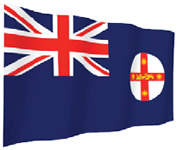
The NSW State Flag has been used since 1876. As with all Australian state flags the Union Jack appears in the top-left corner of the flag of New South Wales. The NSW Badge, which appears alongside the Union Jack, features the red cross of St George with a golden lion at its centre and an eight pointed star on each arm of the cross.
Coat of Arms
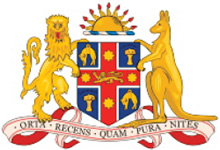
The NSW Coat of Arms was adopted in 1906 after it had been approved by King Edward VII. It is held by the British Lion and the Australian Kangaroo. It includes symbols of the Golden Fleece (symbolising the wool industry), the wheat sheaf (symbolising agriculture and industry), the red cross of St George and a rising sun (symbolising a new country). The Latin motto reads Orta Recens Quam Pura Nites which translates to ‘Newly risen, how brightly you shine’.
Emblems
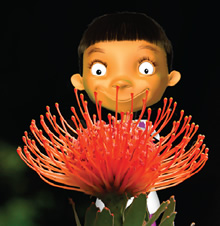
New South Wales has several emblems.
The floral emblem of NSW is the Waratah, a large red flower which is protected by law. Like gum leaves, the Waratah turns its leaves sideways to avoid the blaze of the sun.
The bird emblem of NSW is the Kookaburra, the animal emblem is the Platypus and the fish emblem is the Blue Groper.
The gemstone emblem of NSW is the Black Opal, the rarest and most valuable type of opal.
New South Wales attractions
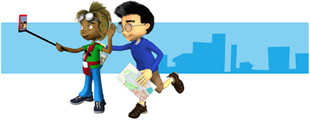
New South Wales is a prime tourist destination for international and interstate visitors. It is home to some of the world’s most beautiful beaches and spectacular scenery. It holds many manmade and natural wonders, some of which are detailed below.
Sydney Opera House and the Sydney Harbour Bridge
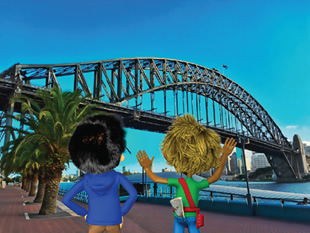
The Sydney Opera House is located at Bennelong Point and has been open since 1973. It is listed on the National Heritage List as well as the UNESCO World Heritage List. The iconic white rooves of the Opera House were designed by Danish architect Jorn Utzon to represent the sails of a ship entering the harbour. The Opera House took decades to plan and construct and cost $102 million.
Behind the Opera House is the arch of the Sydney Harbour Bridge, connecting north to south. It took 1,400 workers eight years to construct. The Bridge, nicknamed the Coathanger, was officially opened on 19 March 1932. In the same year, 96 steam trains were used to test how much weight the Bridge could take. Today, eight lanes of traffic and two rail lines cross the bridge.
The Blue Mountains
The Blue Mountains is a UNESCO World Heritage Area. The ancient land offers breathtaking views, beautiful walking trails and astounding botanical and cultural treasures. The Blue Mountains is home to the Three Sisters, an amazing geological landmark. The Three Sisters are large pillars of stone standing at 922, 928 and 906 metres tall, around which an Aboriginal dreaming story is based.
New South Wales fast facts
- New South Wales’ border is the longest of all Australian state and territory borders, measuring a lengthy 4,635 km.
- New South Wales is sometimes called the ‘First State’ or the ‘Premier State’.
- The lowest recorded temperature in Australia was recorded in 1994 in Charlotte Pass, NSW at a chilly -23°C.
- Many international film stars were born in New South Wales such as Hugh Jackman, Rebel Wilson, Rose Byrne and Toni Collette. Models Miranda Kerr and Elle Macpherson were also born in NSW.
- Believe it or not, the inventor of Australian Rules Football, a game better known in Victoria, was born in NSW. His name was Thomas Wentworth Wills and he was born in 1835.
- The famous Australian bush poet Andrew Barton Paterson – better known as Banjo Patterson, was born in NSW in 1864. He penned such classics as the novel The Man from Snowy River and the classic song Waltzing Matilda. He is pictured on the Australian $10 note.
- The Sydney Opera House has one million tiles covering its roof.
- Did you know that the temperature can affect the arch of the Sydney Harbour Bridge? It can rise or fall up to 18cm depending on the temperature.
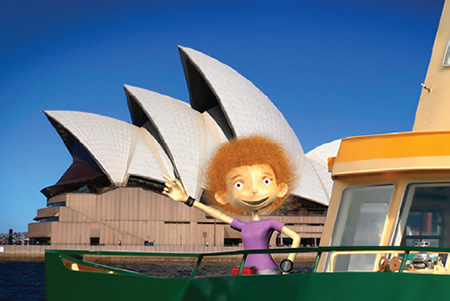
References
The following links will direct you to the homepage of the websites used as references for this topic.
- Australian Bureau of Statistics: www.abs.gov.au
- New South Wales Government: www.nsw.gov.au
- City of Sydney: www.cityofsydney.nsw.gov.au
- australia.com: www.australia.com




